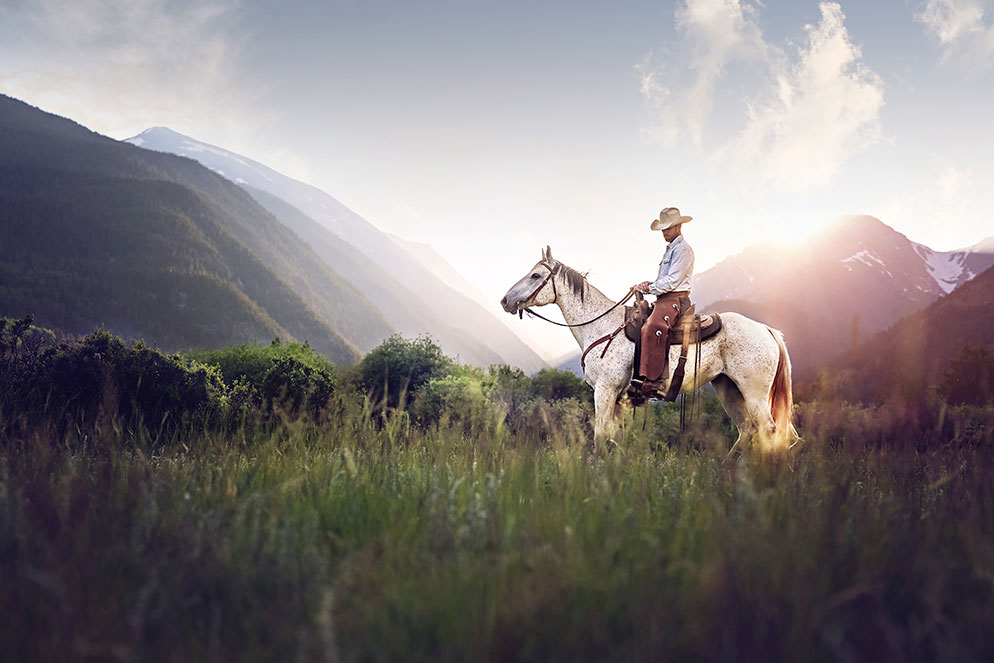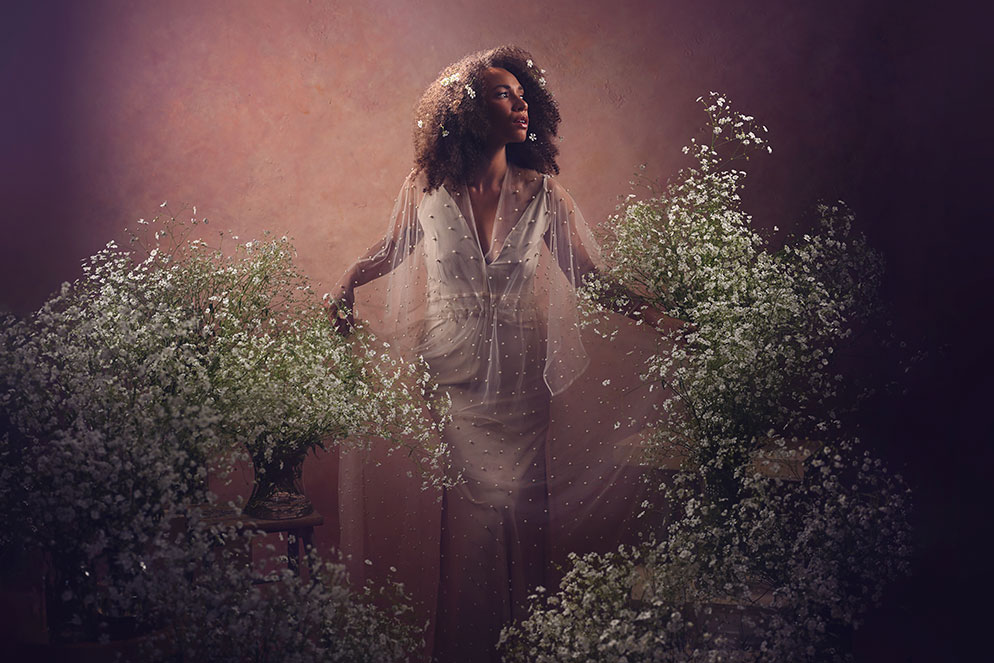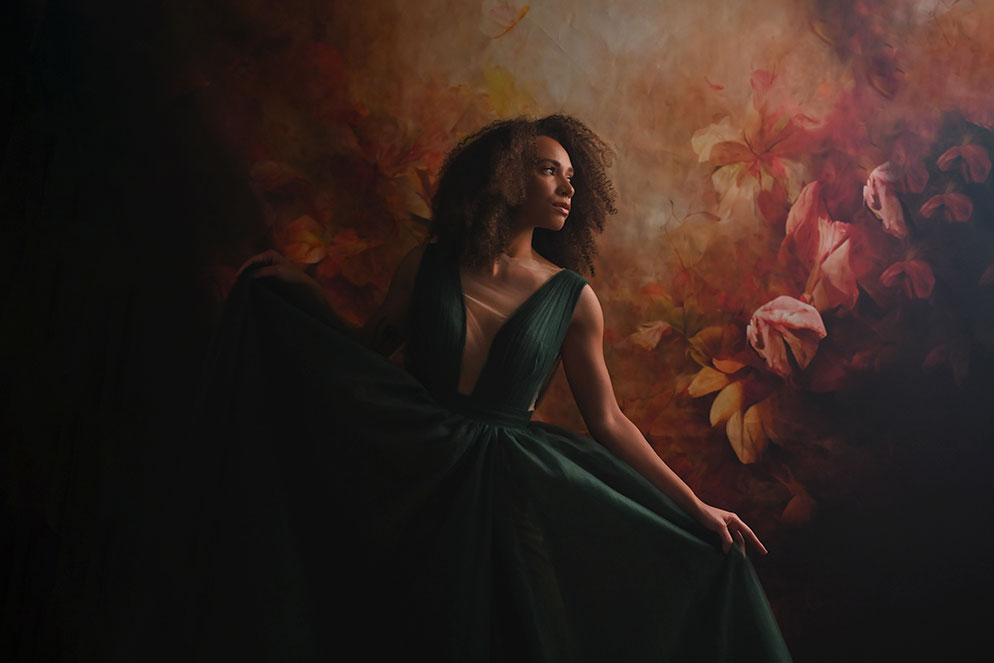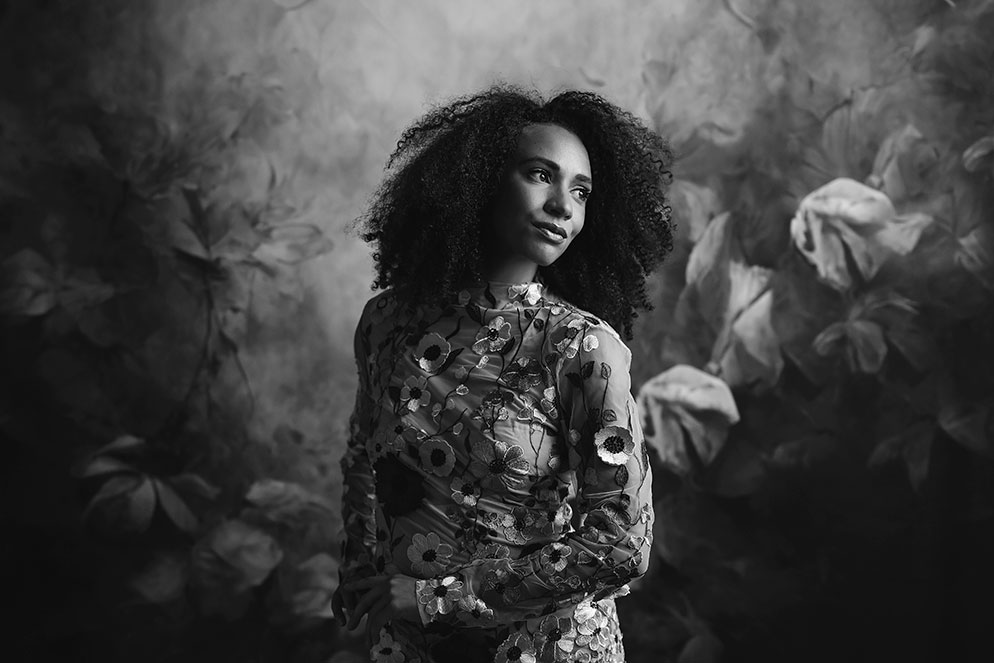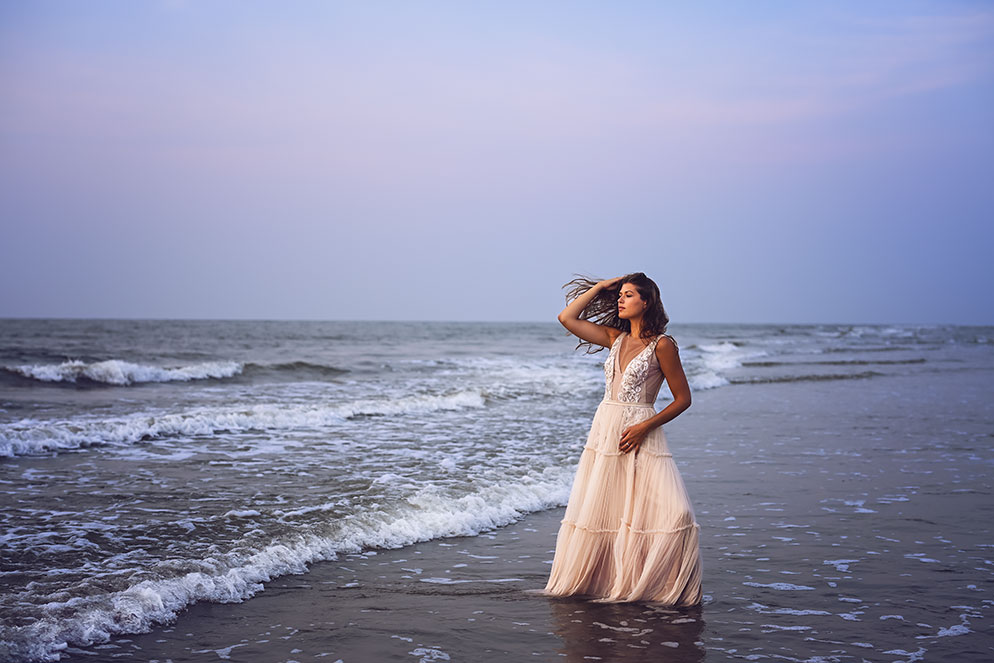How the Stylish, Breakthrough Z f Can Change the Way You Take Pictures…and Why You’d Want To
“I love to incorporate flowers in my work,” D’Ann Boal says, “and for this shot I brought the garden inside for a painterly portrait that featured a lot of texture.” Z f, Z NIKKOR Z 50mm f/1.2 S, 1/2 second, f/2.2, ISO 200, manual exposure.
The look of the Z f camera is probably going to catch your eye simply because it’s different. We call that difference “heritage styling”—the camera resembles our FM2, a film SLR from way back when, and no matter if someone’s carrying the Z f, or shooting with it, or you just see a photo of it, it’s going to get your attention. But what’s likely to keep your attention for the long run is what the camera can do for you, what you can do with it, and maybe even how it makes you feel.
Just ask portrait and lifestyle photographer D’Ann Boal. Her go-to camera is the Z 9, but the Z f has won a place among her gear for both its style and substance.
“Again, I was going for a painterly portrait, but this time in much lower light to test out the camera at a higher ISO. I got clean, beautiful files—very impressive—and the background was another way of getting flowers into an image.” Z f, NIKKOR Z 50mm f/1.2 S, 1/400 second, f/2.8, ISO 2000, manual exposure.
Art and Craft
“My initial impression of the camera was that it’s inspiring,” D’Ann says. “The body itself makes it fun, but more than that—it’s a camera that brings you back to the craft of photography.” Which frankly was what we hoped for—a more deliberate, slower-paced and contemplative process, and the thought that the look of the camera can actually influence the way you interact with it.
One of the first things to draw D’Ann’s attention was the Z f’s dedicated black-and-white mode, which is instantly activated by a top-mounted switch. “That switch makes is so approachable and inviting to shoot in black and white,” she says. “Color is such a part of my work, and I’m always going to use it, but being able to see and shoot in monochrome was inspiring, and it gave me added creativity.”
“In color, this was a very busy frame, but by switching to black and white I was able to simplify it and draw the eye to the use of light, the textures and the emotion of the picture. And the Z f’s Skin Softening feature is amazing for images like this, where a creamy skin tone really matters.” Z f, NIKKOR Z 50mm f/1.2 S, 1/320 second, f/2, ISO 1250, manual exposure.
Part of the creativity was the option of choosing from two monochrome settings: Flat Monochrome, with smooth tones from shadow-to-light, or Deep Tone Monochrome, for higher contrast and a touch more drama to the image. “Deep Tone was what I chose,” D’Ann says, “and it was exquisite. With Deep Tone the blacks are richer, the highlights top a bit more and there’s a depth to the tonal range that’s really beautiful.”
In fact, the quick-switch option and Deep Tone made D’Ann, a photographer who was almost exclusively working in color, form a deep appreciation for black and white. “The focus of my color photography is light, and black-and-white photography is primarily about light. I also think black and white invites viewers to linger, to pay more attention to the light in the images, and to texture, shape and contrast—and even emotion.”
Skin Softening is an awesome feature, especially for a portrait photographer. It helps me get my images closer to how I want them, right out of the camera.
“This is more typical of my client work—going for a very warm feel with lots of depth from foreground to middle to background. Eye AF was the star here, maintaining focus even when they weren’t looking straight at the camera.”
Z f, NIKKOR Z 85mm f/1.2 S, 1/3200 second, f/2, ISO 100, manual exposure.
In-Camera Excellence
D’Ann’s appreciation extended to practical considerations as well as artistic ones. For example, D’Ann’s Z f images, whether color or black and white, drew minimal post processing. “Details and tones were just beautiful, straight out of the camera,” she says. “I’m used to shooting with the Z 9, a 45.7-megapixel camera—and the Z f is 24.5 megapixels, but I was blown away at how beautiful the images were.”
We intended the Z f to be exactly the intersection of classic styling and cutting-edge technology that D’Ann was describing. The camera features a number of advanced technologies, including pixel shift shooting, which produces incredible detail in up to 96-megapixel merged files, and VR—the best in any of our cameras—that achieves up to eight stops of Vibration Reduction (depending on the lens used). In addition, there’s Focus-Point VR, in which the actual Vibration Reduction is based not just on the center of the image, but on where the focus point is, a big plus for creative composition.
Here the Z f dealt with a range of tones as well as intensities, reflections and directions of light. “The AF was a lifesaver for this shot, and for others in the setup,” D’Ann says. Z f, NIKKOR Z 50mm f/1.2 S, 1/1000 second, f/2.8, ISO 100, manual exposure.
The range of images D’Ann photographed with the Z f included several in challenging locations and lighting conditions, and for those she had high praise for Eye AF and the camera’s low-light focusing accuracy and its ability to handle intense backlighting. Skin Softening was also notably appreciated. “It’s an awesome feature, especially for a portrait photographer who appreciates dreamy, creamy skin tones. It helps me get my images closer to how I want them, right out of the camera, and it makes my editing so much easier.”
Ultimately, though, there was one factor added to the Z f’s style and technical versatility that totally sealed the deal, and that was its light weight and smaller-than-Z 9 size. “It’s such a great little travel camera,” D’Ann says. “It absolutely belongs in my purse in Paris.”
You know, maybe we should have added “where you’ll want to take it” to our list of likely long-run appeals of the Z f.
D’Ann was getting movement from the waves for this sunrise shot, and she wanted the same from her subject. “I got it all—movement in her hair, her dress—and the AF tracked her eyes through all of it.” Z f, NIKKOR Z 50mm f/1.2 S, 1/250 second, f/2.8, ISO 200, manual exposure.

